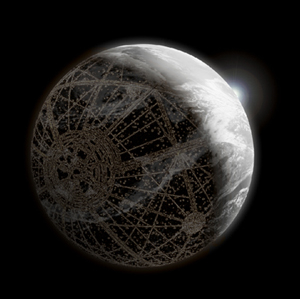Population Growth Devastates Ecosystems
 One of Issac Asimov’s best known stories includes Trantor, a planet totally encased in steel and concrete. In Asimov’s story, people could freely move between Trantor and other, nicer, planets. They could send back food and water. In our story, we have only one planet, Earth, and not a glimmer of hope for reaching others. And yet, we are destroying the land, sea, and air of our planet as if we had options. We do not. For me, this raises two concerns. First, I care about and wish to preserve the wild species of animals and plants that still survive outside our homes. Second, I want my descendents to have good air, water, and food amidst abundant wildlife and natural ecosystems. To alleviate my concerns, I belive that conservation efforts to preserve nature must include leadership and incentives for human population reduction.
One of Issac Asimov’s best known stories includes Trantor, a planet totally encased in steel and concrete. In Asimov’s story, people could freely move between Trantor and other, nicer, planets. They could send back food and water. In our story, we have only one planet, Earth, and not a glimmer of hope for reaching others. And yet, we are destroying the land, sea, and air of our planet as if we had options. We do not. For me, this raises two concerns. First, I care about and wish to preserve the wild species of animals and plants that still survive outside our homes. Second, I want my descendents to have good air, water, and food amidst abundant wildlife and natural ecosystems. To alleviate my concerns, I belive that conservation efforts to preserve nature must include leadership and incentives for human population reduction.
“In the past 50 years, my own lifetime, the human population has more than doubled from about 3.2 billion to more than 7 billion. There will likely be more than 10 billion by mid-century. This raises some pressing questions. How many people can our small planet sustain? How many can it sustain while leaving room for the other species that call Earth home? These questions are at the heart of a new speaking tour, which began this week, by the Animal Legal Defense Fund and the Center for Biological Diversity, entitled “Breaking the Taboo: Leading Animal and Environmental Groups to Discuss Population, Human, and Animal Rights” Read more.

